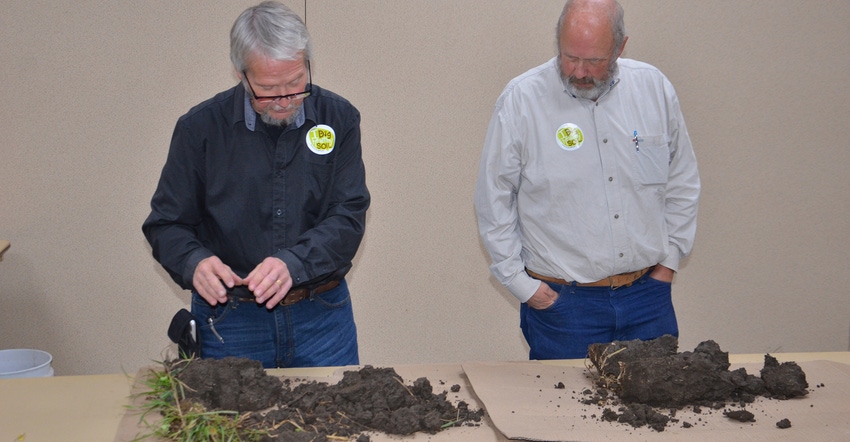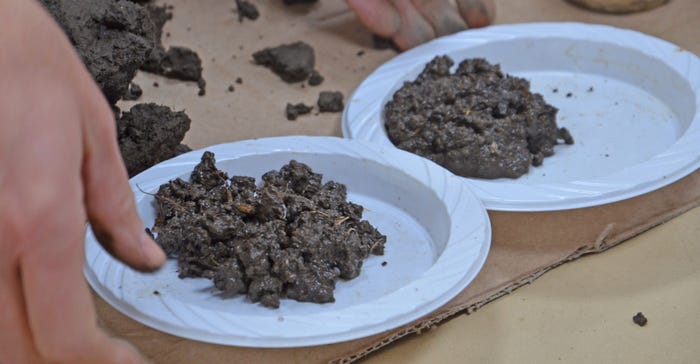
Go to enough conservation field days and all the demonstrations begin to look alike. You know the results before the presenter does the demonstration. So, when a live demonstration grabs your attention, you know it is something special.
Brian Daggy with the soil and water conservation district in Boone County, Ind., and Curt Emmanuel, then the Boone County Extension ag educator, apologized for not being able to go to the SWCD plots due to weather conditions. The 7-acre demonstration plot was established on Boone County land six years ago so the SWCD could show how no-till and cover crops compare to conventional tillage.
“We grabbed a couple of slices of soil this morning when it looked like rain,” Daggy told the audience. Then the pair laid them on a table, and farmers crowded around. The slice of soil on the left was pulled from a strip within the plot that was not tilled for six years. Cover crops were growing on it. The slice of soil on the right, going down about 18 inches, was from the conventional field just outside the SWCD plot. Soil types were similar — both were dark soils.
Striking difference
Color is where similarities stopped. The slice on the left crumbled apart and “looked alive,” while the slice on the right appeared to be a massive block, with little soil structure. Even someone who has never no-tilled and never intends to couldn’t deny the difference.
There was also a difference in smell, with a freshly turned earth smell coming from the soil on the left. Daggy noted that when healthy soil is disturbed, gases are released, accounting for the difference.
Stephanie McLain, Indiana’s state soil health specialist with the Natural Resources Conservation Service, evaluated the soils. She placed a clump from each in water. Soil from the conventional clump began dissolving, while aggregates held the no-till soil firm. She drained away the water and dumped each portion of soil on a paper plate. The no-till soil held its shape, while the conventional soil melted into a glob of mud. She called it a “slump test.”

Can minimum tillage and cover crops improve soil health? While it wasn’t scientific, this “see and smell” demonstration left little doubt. Yes, it can!
About the Author(s)
You May Also Like




